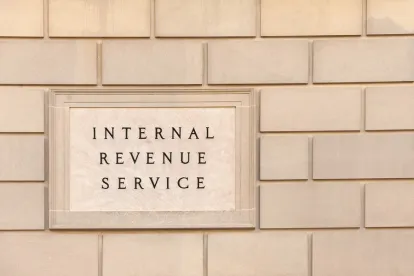Notice 2020-68 from the IRS provides valuable clarification for sponsors of qualified plans, 403(b) plans, and 457(b) governmental plans, as well as IRA holders, related to certain provisions in the Setting Every Community Up for Retirement Enhancement Act of 2019 (SECURE Act) and the Bipartisan American Miners Act of 2019.
A new tax credit under the SECURE Act aims to offset the costs of establishing and maintaining a qualified employer plan that provides an eligible automatic enrollment arrangement (EACA). The $500 credit is also available to eligible employers that amend an existing plan to add an EACA.
The credit is available only to small businesses (with up to 100 employees who were paid at least $5,000 a year) once every three years. Notice 2020-68 clarifies some requirements and limitations of the credit. It provides guidance through questions and answers to Section 112 and 113 of the SECURE Act.
The three-year period begins in the year in which the employer establishes a qualified employer plan with an EACA feature, or the year an existing plan is amended to add an EACA. Having more than one qualified employer plan with an EACA will not earn a qualified employer more than one credit every three-year period. To keep the tax credit, the eligible employer must keep the EACA in the plan (or a spin-off) for the entire three-year period.
The IRS clarified that the credit applies to each eligible employer that participates in a Multiple Employer Plan (MEP) as if each employer participating in the MEP were sponsoring its own plan with an EACA.
Repeal of Maximum Age for IRA Contributions
Section 107 of the SECURE Act repeals the maximum age for traditional IRA contributions. Previously, individuals could not make IRA contributions for a taxable year if they attained age 70½ by the last day of that taxable year. The SECURE Act repeals that cap. Section 114 of the SECURE Act increases the age for required minimum distributions (RMDs) from age 70½ to age 72.
IRS Notice 2020-68 clarifies that financial institutions do not have to accept post-age 70½ contributions. However, if a financial institution chooses to accept post-age 70½ contributions, it must amend its contracts by December 31, 2022, and notify benefiting individuals of the amendment 30 days after the amendment is adopted or becomes effective, whichever is later. The Notice also clarifies that an individual’s post-age 70½ contributions may not be used to offset RMDs, as contributions and distributions are separate transactions.
Section 107(b) of the SECURE Act coordinates the repeal of the maximum age for contributions with the qualified charitable distributions. The SECURE Act provides that the amount of qualified charitable distributions an individual seeks to exclude from gross income is reduced by an individual’s post-age 70½ IRA contributions. However, the amount of post-age 70½ contributions that reduced an individual’s qualified charitable distributions in a prior year does not reduce the excludable amount again for later taxable years.
Section 112 – Participation of Long-Term, Part-Time Employees in § 401(k) Plans
Section 112(b) provides that the amendments made by § 112 of the SECURE Act apply to plan years beginning after December 31, 2020, except that, for purposes of § 401(k)(2)(D)(ii) of the Internal Review Code, the 12-month periods beginning before January 1, 2021, are not considered. The Notice clarifies that § 112(b) does not apply to the special vesting rules in § 401(k)(15(b)(iii). Unless excluded by § 411(a)(4)’s exceptions (e.g., years of service before the employee attains age 18), all years of service with the employer must be considered to determine the long-term, part-time employee’s nonforfeitable right to employer contributions.
IRS, Treasury Department Encourage Public Comment
The IRS and Treasury Department invites public comments regarding the Notice, specifically on how to reduce the potential administrative burdens relating to counting years of service beginning before January 1, 2021, to determine long-term, part-time employees’ nonforfeitable rights to employer contributions while still complying with the special § 401(k) vesting rules and the service requirements under Code § 411(a)(4).
Section 113 – Qualified Birth or Adoption Distributions
The Notice answers 18 common questions relating to § 113’s tax exception from penalties associated with early distributions for any qualified birth or adoption. Here are some key points on qualified birth or adoption distribution:
-
Must occur within one-year from birth or adoption and the recipient must include the new dependent on the tax return filed for the year of distribution.
-
Are eligible from a qualified defined contribution plan (§ 401(a)), annuity plan (§ 403(a)), annuity contract (§ 403(b)), governmental plan (§ 457(b)), or an IRA.
-
Is not subject to the 10% early distribution tax under § 72(t).
-
Applies to the adoption of any individual who has not attained age 18, is physically or mentally incapable of self-support.
-
Is available to each parent and each child separately, e.g., twins could have two distributions per parent.
-
Is eligible for recontribution in whole or in part to the plan.
-
Is a discretionary amendment and, if elected, must be made by the last day of the plan year beginning on or after January 1, 2022.
-
Allows the plan administrator to rely on reasonable representations from the individual, unless it has actual knowledge to the contrary.
-
Is not an eligible rollover distribution.
Difficulty of Care Payments May be Included for Purposes of § 415 Compensation
Section 116 of the SECURE Act amended § 415(c)(8) under the Code and permits excluded difficulty of care payments to be considered as compensation to determine certain retirement contribution limitations.
Before the SECURE Act, a difficulty of care payment, which is a type of qualified foster care payment, was excludable compensation under the Code and was not included in a participant’s compensation in calculating the annual addition limit under Code § 415(c)(1). As excludable, an employee receiving such payments from an employer could not contribute to, or receive allocations under, the employer’s qualified plan on such payments.
The SECURE Act amended Code § 415(c)(8) to provide that a participant’s compensation for purposes of Code § 415(c)(1) is increased by the amount of excludable difficulty of care payments and the participant may contribute to, or receive allocations under, the employer’s qualified plan based on the participant receiving the difficulty of care payment. The Notice answered questions clarifying that the difficulty of care payment can be includable only under the Code § 415 definition of compensation if such payment was made by the participant’s employer, and that a qualified plan need not be amended to include difficulty of care payments in the plan’s definition of § 415(c)(1) compensation if the employer does not make such payments to its employees; if the employer begins to make such payments, a plan amendment will be required. The IRS noted that it will address the applicability of the excise tax on excess IRA contributions under Code § 4973 to nondeductible IRA contributions based on difficulty of care payments in future guidance.
Before Section 104 of the Bipartisan Miners Act of 2019 amended Code § 401(a)(36), the minimum age for allowable in-service distributions in a pension plan was age 62. The Miners Act amended Code § 401(a)(36) by lowering the minimum age from age 62 to age 59½, which now mirrors what has been permitted in 401(k) plans. The Miners Act also amended Code § 457(d)(1)(A)(i) to similarly lower the minimum age for in-service distributions from 70½ to 59½. The Notice clarifies these are optional changes. The plan need not provide in-service distributions or, if they do, they can continue to maintain them at an age later than 59½. The Notice also clarifies this SECURE Act change of lowering the minimum age from age 62 to 59½ for in-service distributions does not affect the applicability of the requirement that benefits be definitely determinable, so sponsors can change the definition of normal retirement age under the plan if the plan sponsor continues to satisfy all other applicable qualification requirements, such as not violating the anti-cutback provisions under Code § 411(d)(6). To satisfy the reasonably representative requirement regarding the definition of normal retirement age under the plan, governmental pension plans may continue to rely on the 2016 proposed regulations, which provided for several additional normal retirement age safe harbors, e.g., the later of age 60 and five years of service, age 55 and 10 years of service, and so on.
IRS Provides Additional Guidance Regarding Deadlines to Adopt SECURE Act Amendments
The Notice clarifies that a qualified plan or a 403(b) plan will not fail to satisfy the anti-cutback requirements of the Code or ERISA because of a SECURE Act or Miners Act plan amendment, provided the amendment is adopted by the last day of the plan year beginning on or after January 1, 2022 (on or after January 1, 2024, for governmental plans and plans maintained by one or more collective bargaining agreements), so long as the employer meanwhile operates the plan under the legally required provisions of the SECURE Act.







 />i
/>i
